Showing Spotlights 1649 - 1656 of 2852 in category All (newest first):
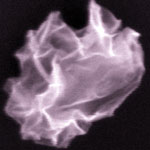 How often have you crumpled a sheet of paper in frustration and thrown it into the bin without further thought? You'll be amazed to hear that researchers - inspired by a trash can full of crumpled-up papers - have now applied this to solving one of the challenges of scaling up production of graphene sheets. One of the fascinating properties of crumpled paper balls is their strain-hardening effect - the harder you compress them, the stiffer they become, due to the formation of folded ridges that increase the strength. A similar effect has now been found in crumpled graphene balls. These crumpled particles exhibits strain-hardening behaviors, thus making them remarkable resistant to aggregation in both solution and dried states.
How often have you crumpled a sheet of paper in frustration and thrown it into the bin without further thought? You'll be amazed to hear that researchers - inspired by a trash can full of crumpled-up papers - have now applied this to solving one of the challenges of scaling up production of graphene sheets. One of the fascinating properties of crumpled paper balls is their strain-hardening effect - the harder you compress them, the stiffer they become, due to the formation of folded ridges that increase the strength. A similar effect has now been found in crumpled graphene balls. These crumpled particles exhibits strain-hardening behaviors, thus making them remarkable resistant to aggregation in both solution and dried states.
Oct 18th, 2011
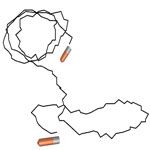 The catalytic conversion of chemical to mechanical energy, which is ubiquitous in biological systems, also is the basis for many of the engine systems that nanotechnology researchers are developing. Catalytic 'engines' will be key components of active micron- and sub-micron scale systems for controlled movement, particle assembly, and separations. So far, most of these catalytic micro- and nanomotors use hydrogen peroxide as the fuel. The major problem associated with this is that the produced oxygen bubbles make the observation and detailed study of these motors difficult. Researchers at the Pennsylvania State University have now introduced a new bubble-free, high efficient nanomotor system that involves the operation of a miniaturized copper-platinum nanobattery.
The catalytic conversion of chemical to mechanical energy, which is ubiquitous in biological systems, also is the basis for many of the engine systems that nanotechnology researchers are developing. Catalytic 'engines' will be key components of active micron- and sub-micron scale systems for controlled movement, particle assembly, and separations. So far, most of these catalytic micro- and nanomotors use hydrogen peroxide as the fuel. The major problem associated with this is that the produced oxygen bubbles make the observation and detailed study of these motors difficult. Researchers at the Pennsylvania State University have now introduced a new bubble-free, high efficient nanomotor system that involves the operation of a miniaturized copper-platinum nanobattery.
Oct 17th, 2011
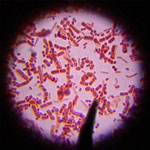 In order to enhance the utilization of nanomaterial in biological systems, it is very important to understand the influence they impart on cellular health and function. Nanomaterials present a research challenge as very little is known about how they behave in relation to micro-organisms, particularly at the cellular and molecular levels. Most of the nanomaterials reported earlier have demonstrated to be efficient antimicrobial agents against virus, bacteria or fungus. There are scarce research reports on the growth-promoting role of nanomaterials especially with respect to microbes. Recent findings, however, have challenged this concept of antimicrobial activity of nanoparticles.
In order to enhance the utilization of nanomaterial in biological systems, it is very important to understand the influence they impart on cellular health and function. Nanomaterials present a research challenge as very little is known about how they behave in relation to micro-organisms, particularly at the cellular and molecular levels. Most of the nanomaterials reported earlier have demonstrated to be efficient antimicrobial agents against virus, bacteria or fungus. There are scarce research reports on the growth-promoting role of nanomaterials especially with respect to microbes. Recent findings, however, have challenged this concept of antimicrobial activity of nanoparticles.
Oct 13th, 2011
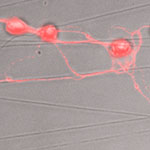 A main difference between central and peripheral nervous system is the lack of regeneration after a neurotrauma, leading to severe and irreversible handicaps. While biomaterials have been developed to aid the regeneration of peripheral nerves, the repair of central nerves such as the optic nerval or nerve cells in the spinal cord remain a major challenge for scientists. The ability to regenerate central nerve cells in the body could reduce the effects of trauma and disease in a dramatic way and nanotechnologies offer promising routes for repair techniques. Scientists have now attempted to rescue retinal ganglion cell death and enhance their regeneration using an electrospun material made of biofunctional nanofibers.
A main difference between central and peripheral nervous system is the lack of regeneration after a neurotrauma, leading to severe and irreversible handicaps. While biomaterials have been developed to aid the regeneration of peripheral nerves, the repair of central nerves such as the optic nerval or nerve cells in the spinal cord remain a major challenge for scientists. The ability to regenerate central nerve cells in the body could reduce the effects of trauma and disease in a dramatic way and nanotechnologies offer promising routes for repair techniques. Scientists have now attempted to rescue retinal ganglion cell death and enhance their regeneration using an electrospun material made of biofunctional nanofibers.
Oct 12th, 2011
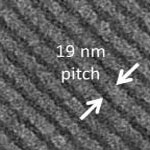 Cost of ownership has become a critical challenge facing future research in nanofabrication. As potential applications have broadened beyond the high-volume manufacture of integrated circuits, demand has increased for a robust tool capable of lithography at high pattern density and fidelity but also at low cost and thus suitable for scientific research, rapid prototyping, and low-volume manufacturing. Unfortunately, current manufacturing technologies employed in the chip industry are anything but 'low cost'. Researchers have now demonstrated a new source for lithography that has both higher per-particle exposure efficiency and a higher brightness than the sources conventionally used for lithography at the 10 nm scale.
Cost of ownership has become a critical challenge facing future research in nanofabrication. As potential applications have broadened beyond the high-volume manufacture of integrated circuits, demand has increased for a robust tool capable of lithography at high pattern density and fidelity but also at low cost and thus suitable for scientific research, rapid prototyping, and low-volume manufacturing. Unfortunately, current manufacturing technologies employed in the chip industry are anything but 'low cost'. Researchers have now demonstrated a new source for lithography that has both higher per-particle exposure efficiency and a higher brightness than the sources conventionally used for lithography at the 10 nm scale.
Oct 11th, 2011
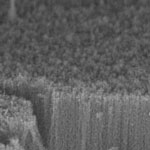 Vertical arrays of carbon nanotubes, called 'forests', are a common type of three-dimentional (3D) nanotube assembly that researchers work with in their labs. These forests can be produced by chemical vapor deposition technique and used for diverse applications such as in photo- or thermoacoustics, highly elastic conductive composites, for mechanical nanomanipulation, in catalysis, or as sensors in nanomedicine, just to name a few examples. These and other applications relay on connectivity of carbon nanotubes in the forest structure. New measurements show that room temperature electrical properties of this nanotube network reveal quite substantial nonlinerarities that became more pronounced at sample cooling.
Vertical arrays of carbon nanotubes, called 'forests', are a common type of three-dimentional (3D) nanotube assembly that researchers work with in their labs. These forests can be produced by chemical vapor deposition technique and used for diverse applications such as in photo- or thermoacoustics, highly elastic conductive composites, for mechanical nanomanipulation, in catalysis, or as sensors in nanomedicine, just to name a few examples. These and other applications relay on connectivity of carbon nanotubes in the forest structure. New measurements show that room temperature electrical properties of this nanotube network reveal quite substantial nonlinerarities that became more pronounced at sample cooling.
Oct 7th, 2011
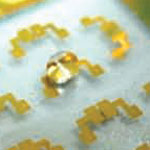 A single drop of water can be fatal to electrical circuits. To prevent water damage, current electronic devices are well sealed and packaged with polymer passivation. Researchers in Korea have now gone one step further and made water resistance a feature of the device itself by incorporating nonwetting, superhydrophobic components into the electronic device. They demonstrated this novel idea with a source/drain structure in a thin-film transistor. This work combines superhydorphobicity with electronic devices, especially resistive switching memory devices. Although much research has been done on either topic, few works report the combination of combining superhydrophobicity and electronic devices. This is a novel approach to combine two different concepts to get a synergic effects.
A single drop of water can be fatal to electrical circuits. To prevent water damage, current electronic devices are well sealed and packaged with polymer passivation. Researchers in Korea have now gone one step further and made water resistance a feature of the device itself by incorporating nonwetting, superhydrophobic components into the electronic device. They demonstrated this novel idea with a source/drain structure in a thin-film transistor. This work combines superhydorphobicity with electronic devices, especially resistive switching memory devices. Although much research has been done on either topic, few works report the combination of combining superhydrophobicity and electronic devices. This is a novel approach to combine two different concepts to get a synergic effects.
Oct 5th, 2011
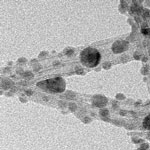 Back in 2008 we reported on nanotechnology solution for radioactive waste cleanup, specifically the use of titanate nanofibers as absorbents for the removal of radioactive ions from water. Now, the same group that developed these nanomaterials reports in a new study that the unique structural properties of titanate nanotubes and nanofibers make them superior materials for removal of radioactive cesium and iodine ions in water. Based on their earlier work, the researchers have now demonstrated a potentially cost-effective method to remediate cesium and iodine ions from contaminated water by using the unique chemistry of titanate nanotubes and nanofibers to chemisorb these ions.
Back in 2008 we reported on nanotechnology solution for radioactive waste cleanup, specifically the use of titanate nanofibers as absorbents for the removal of radioactive ions from water. Now, the same group that developed these nanomaterials reports in a new study that the unique structural properties of titanate nanotubes and nanofibers make them superior materials for removal of radioactive cesium and iodine ions in water. Based on their earlier work, the researchers have now demonstrated a potentially cost-effective method to remediate cesium and iodine ions from contaminated water by using the unique chemistry of titanate nanotubes and nanofibers to chemisorb these ions.
Oct 4th, 2011
 How often have you crumpled a sheet of paper in frustration and thrown it into the bin without further thought? You'll be amazed to hear that researchers - inspired by a trash can full of crumpled-up papers - have now applied this to solving one of the challenges of scaling up production of graphene sheets. One of the fascinating properties of crumpled paper balls is their strain-hardening effect - the harder you compress them, the stiffer they become, due to the formation of folded ridges that increase the strength. A similar effect has now been found in crumpled graphene balls. These crumpled particles exhibits strain-hardening behaviors, thus making them remarkable resistant to aggregation in both solution and dried states.
How often have you crumpled a sheet of paper in frustration and thrown it into the bin without further thought? You'll be amazed to hear that researchers - inspired by a trash can full of crumpled-up papers - have now applied this to solving one of the challenges of scaling up production of graphene sheets. One of the fascinating properties of crumpled paper balls is their strain-hardening effect - the harder you compress them, the stiffer they become, due to the formation of folded ridges that increase the strength. A similar effect has now been found in crumpled graphene balls. These crumpled particles exhibits strain-hardening behaviors, thus making them remarkable resistant to aggregation in both solution and dried states.
 Subscribe to our Nanotechnology Spotlight feed
Subscribe to our Nanotechnology Spotlight feed





